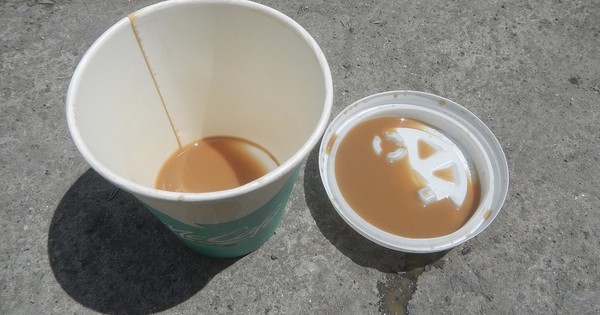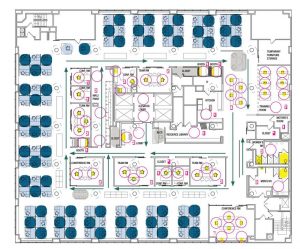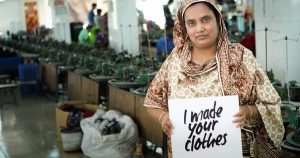Vancouver’s approach to coffee cup waste is too weak

Single-use cups don’t need more sorting. They need to be eliminated.
Vancouver is trying hard to go green. The western Canadian city has made more progress than most others in the country, with bans on foam food and drink containers and plastic straws, restrictions on plastic grocery bags, and an ambitious goal to be zero-waste by 2040. Perhaps most impressively, it has shunned compostable plastics, refusing to see them as a viable alternative to petroleum-based plastics, due to the harm they cause wildlife. (Only San Francisco has done the same with straws, while other cities embrace compostables as a way to carry on business as usual.)
But Vancouver is deluding itself when it comes to coffee cups. The city thinks it can reduce the number of cups going to landfill – currently estimated at 2.6 million every week – by teaching office workers to dispose of single-use cups differently. It has partnered with Return-It, the non-profit organization that runs the province’s beverage recycling program, and, for the next six months, will have five trial recycling bins set up downtown.
These bins are different from other recycling bins because they break down the recycling process into three steps: Lid off. Empty liquids. Dump cup and sleeve. Any type of disposable cup from any brand can be disposed of, whether it is plastic, multi-laminate or plastic-lined paper. Return-It will collect the empty cups and lids and transform them into “new recycled products,” although it’s not specified what these will be. From the company’s press release:
“Managed by Return-It, the pilot will evaluate recycling end markets for the items collected, test the marketability of different disposable coffee cup materials (such as laminated cups), encourage public participation, and determine the viability of a broader, permanent program.”
While the goal of teaching people how to recycle better is well-intended and does help to eliminate wishcycling (the damaging practice of wishing something non-recyclable could be recycled, and thus contaminating an entire load of otherwise recyclable products), it does not address the root problem of creating so much waste in the first place. As we’ve argued many times on TreeHugger, coffee culture has to shift and evolve if we ever hope to stop generating so much trash. Recycling will not fix this problem. It’s just a Band-Aid solution.
Even the Ellen MacArthur Foundation, in its plan for a circular economy, says that designing out waste and pollution is a fundamental principle. That does not mean more or even better recycling; it means implementing programs and initiatives that do away with a single-use cup in the first place.
Financial incentives to bring one’s own coffee cup and enormous fees to purchase a disposable cup would go a long way toward motivating people to remember their own. A selection of in-house porcelain mugs or city-wide reusable cup programs with return bins on every block could be revolutionary. Vancouver should strive to be more like Freiburg, Germany, with its brilliant €1 reusable cup that is provided to businesses by the city, is reused up to 400 times, and can be returned to 100 different stores in the city center. Now that’s real green innovation.
It’s time for city leaders to think outside the standard model for coffee consumption, rather than try to perpetuate it through fancy recycling bins that most people will probably get tired of using within a few weeks.
Single-use cups don’t need more sorting. They need to be eliminated.







